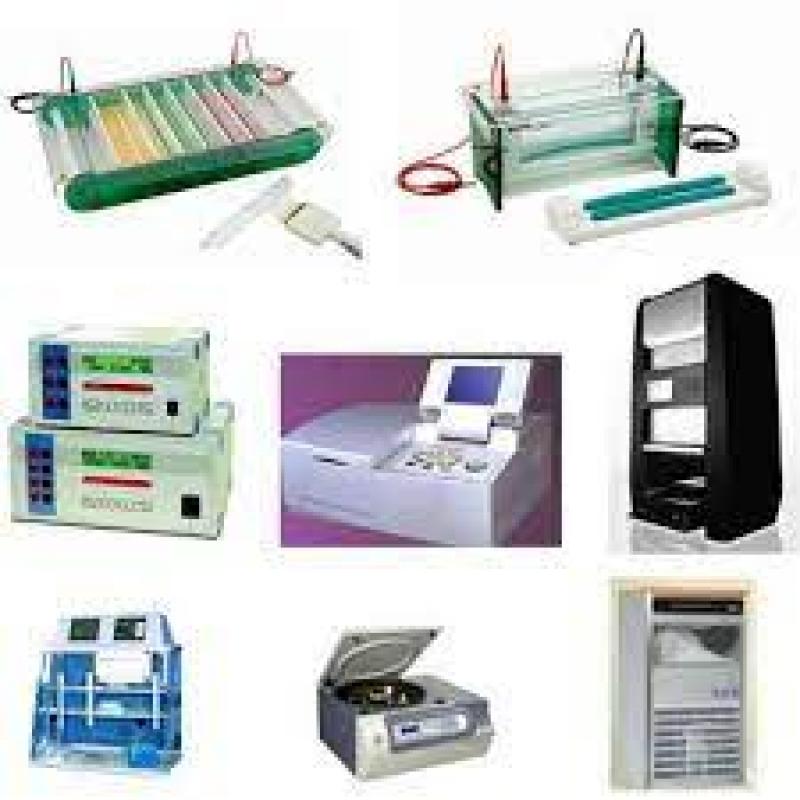In the world of modern science, biotechnology has emerged as a revolutionary field with far-reaching implications for various industries. Biotechnology instruments play a pivotal role in this domain, enabling researchers to unravel the complexities of life at the molecular level. These sophisticated tools have revolutionized the way we study, manipulate, and harness biological processes, leading to groundbreaking discoveries and innovations. In this blog, we will delve into the Biotechnology Instruments Market, its current state, advancements, and the potential it holds for shaping our future.
Understanding Biotechnology Instruments
Biotechnology instruments encompass a wide range of cutting-edge tools designed to analyze, manipulate, and measure biological systems. These instruments enable scientists to study DNA, proteins, cells, and other biological entities with unparalleled precision. They have become indispensable in various fields, including pharmaceuticals, agriculture, environmental science, and medical research.
The Market Overview
The biotechnology instruments market has been experiencing significant growth in recent years. Technological advancements, an increasing focus on research and development, and rising investment in the biotechnology sector are some of the key drivers propelling this growth. Moreover, the demand for personalized medicine and the need to combat complex diseases like cancer and genetic disorders have also contributed to the market's expansion.
Segments of the Biotechnology Instruments Market
- DNA Sequencing Instruments: DNA sequencing is a fundamental process in biotechnology research, and instruments like Next-Generation Sequencers (NGS) have revolutionized the field. These instruments have made sequencing genomes faster, more accurate, and cost-effective, enabling researchers to explore the genetic basis of diseases and identify potential therapeutic targets.
- PCR (Polymerase Chain Reaction) Instruments: PCR instruments are essential for amplifying and analyzing DNA samples. They have various applications, including diagnosing infections, detecting genetic mutations, and studying gene expression. Advancements in real-time PCR have further enhanced its sensitivity and specificity, making it a valuable tool in diagnostics and research.
- Mass Spectrometers: Mass spectrometers are crucial in proteomics and metabolomics research, helping researchers identify and quantify biomolecules with high precision. These instruments aid in understanding protein structures, protein-protein interactions, and post-translational modifications, which are vital for drug development and disease research.
- Flow Cytometers: Flow cytometers are essential for analyzing individual cells in a heterogeneous mixture. They can identify and sort cells based on their characteristics, such as size, shape, and fluorescence. These instruments have wide applications in immunology, cancer research, and stem cell studies.
- Microarray Instruments: Microarrays facilitate the study of gene expression on a genomic scale. They allow researchers to analyze thousands of genes simultaneously, providing insights into gene regulation and identifying potential biomarkers for diseases.
Advancements in Biotechnology Instruments
The biotechnology instruments market has witnessed remarkable advancements in recent years, driven by continuous research and innovation. Some notable developments include:
- Single-Cell Analysis: Traditional techniques often involve analyzing bulk samples of cells, masking the heterogeneity within a population. Recent advancements in single-cell analysis instruments have enabled researchers to study individual cells, uncovering valuable insights into cellular diversity and behavior.
- CRISPR Technology: The revolutionary CRISPR-Cas9 gene editing technology has transformed biotechnology research. This instrument allows scientists to precisely edit DNA sequences, offering unprecedented opportunities in gene therapy, agriculture, and basic research.
- Automation and Robotics: To meet the demands of high-throughput experimentation and increase reproducibility, biotechnology instrument manufacturers have incorporated automation and robotics into their products. These advancements have streamlined workflows and reduced the potential for human errors.
- Lab-on-a-Chip Technology: Lab-on-a-chip devices miniaturize and integrate laboratory functions onto a single chip. These devices offer advantages such as portability, reduced sample and reagent consumption, and rapid analysis, making them valuable tools in point-of-care diagnostics and field research.
Potential Future Growth
The future of the biotechnology instruments market appears promising, with several factors contributing to its potential growth:
- Personalized Medicine: As the understanding of individual genetic variations grows, personalized medicine is becoming a reality. Biotechnology instruments will play a crucial role in tailoring treatments to a patient's unique genetic makeup.
- Synthetic Biology: The emerging field of synthetic biology seeks to engineer biological systems for various applications, including sustainable energy production, environmental remediation, and advanced therapeutics. Biotechnology instruments will be instrumental in designing and optimizing these engineered biological systems.
- Point-of-Care Diagnostics: There is a growing need for rapid and accurate diagnostics, especially in remote or resource-limited settings. Biotechnology instruments with portability and ease of use will facilitate point-of-care testing for various diseases.
- Bioinformatics Integration: As the volume of biological data grows, the integration of biotechnology instruments with bioinformatics tools will become more critical. This integration will enable researchers to analyze complex datasets efficiently and derive meaningful insights.
Conclusion
The biotechnology instruments market has undergone remarkable growth, driven by technological advancements and the increasing demand for solutions to complex biological challenges. These instruments have transformed the landscape of research, enabling scientists to delve deeper into the intricacies of life and develop innovative solutions for various industries. As we look to the future, the potential for further growth in the biotechnology instruments market is vast, promising a future shaped by cutting-edge research, personalized medicine, and sustainable biotechnological innovations.
